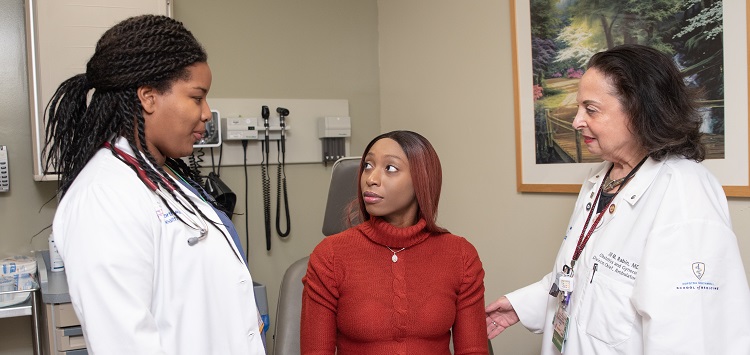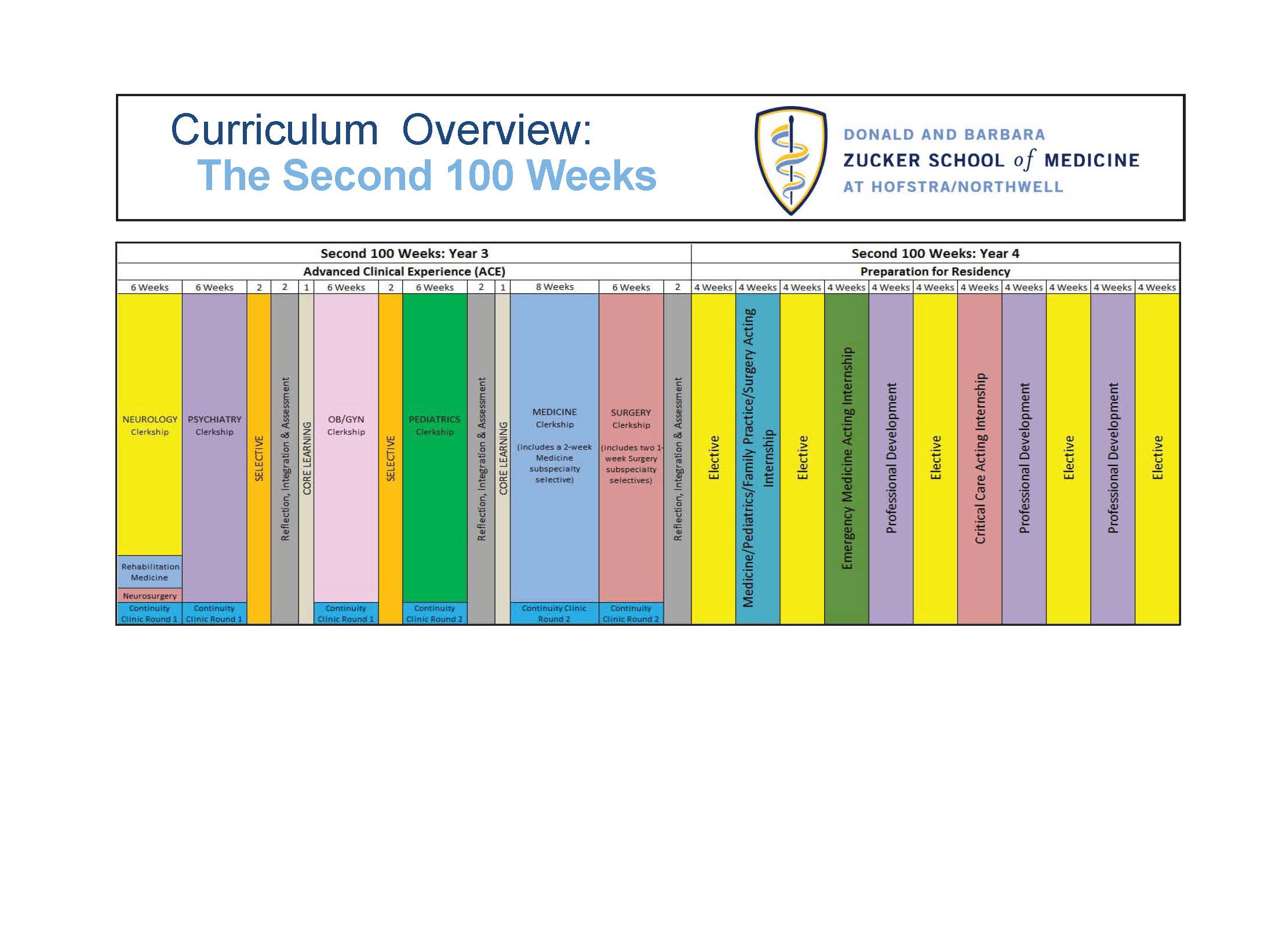Pediatrics Clerkship
The Pediatrics clerkship is six-week rotation, which includes three weeks of inpatient pediatrics, including 1 week of evening shifts, one week of newborn medicine, one week of Pediatrics Emergency Medicine, and one week of Outpatient Clinic.
Questions?
General Questions: somace@hofstra.edu
- Clerkship Goals
- Acquire a working knowledge and appreciation of normal and abnormal growth and development.
- Recognize, understand the signs and symptoms, pathophysiology, diagnoses, and treatment of common disorders of infancy, childhood, and adolescence.
- Develop an understanding and appreciation of children's and families' perspectives of being cared for within our healthcare system through participation in family-centered patient care.
- Further develop the skills necessary for creating effective therapeutic relationships with patients and families (utilizing principles of the 3 function model emphasized during the 1st 100 weeks), and acquire increased understanding and appreciation for the importance of this therapeutic relationship in health outcomes.
- Further develop skills of cultural competence in healthcare, and increase appreciation for the utilization of these skills in overcoming health disparities, and improving health outcomes for children.
- Clinical Presentations & Procedures
Clinical Presentations
A: Assist P: PerformBy interacting with patients, student accomplish the following:
- Describe an approach to evaluating a patient with the “clinical presentation”
- Describe the differential diagnosis for a patient presenting with the “clinical presentation”
- Describe the historical features, epidemiology of disease physical exam findings, diagnostic strategies and treatment for the most common diagnoses associated with the “clinical presentation”
- Compare and contrast illness scripts
- Describe prevention strategies for patients presenting with the “clinical presentation”
- For procedures, demonstrate the ability to perform the procedure and to know the indications, contraindications
- Asthma
- Chronic Medical Problem
- Emergent Clinical Problem (for example, respiratory distress, shock, ataxia, seizures, airway obstruction, apnea, proptosis, suicidal ideation, trauma, cyanosis)
- Fever without Localizing Findings
- Fluid, electrolyte, and acid/base disorders
- GI Tract Concern (for example, nausea, vomiting, diarrhea, abdominal pain)
- Lower Respiratory Tract Concern (for example, cough, wheeze, shortness of breath)
- Neonatal Jaundice
- Neurologic Concern (for example, lethargy, irritability, fussiness, headache)
- Parental Concern or Abnormalities Related to Development
- Parental Concerns or Abnormalities Related to Growth
- Parental Concerns or Abnormalities Related to Nutrition
- Skin and Subcutaneous Lesions/Rash
- Upper Respiratory Tract Concern (for example, sore throat, difficulty swallowing, otalgia)
- Well Visit (for example, newborn-year 1, child 1-6, child 6-10, adolescent)
- Procedure: Administer vaccines in infants and children, using appropriate needle size and location
- Assessment Methods
Assessment Methods
Students are assessed in a variety of ways to generate a grade in the Pediatrics Clerkship. As a faculty member or resident who is responsible for supervising a student, you will be expected to complete a “Clinical Assessment of Student” form. The questions/anchors can be found on the Second 100 Weeks assessment page.


